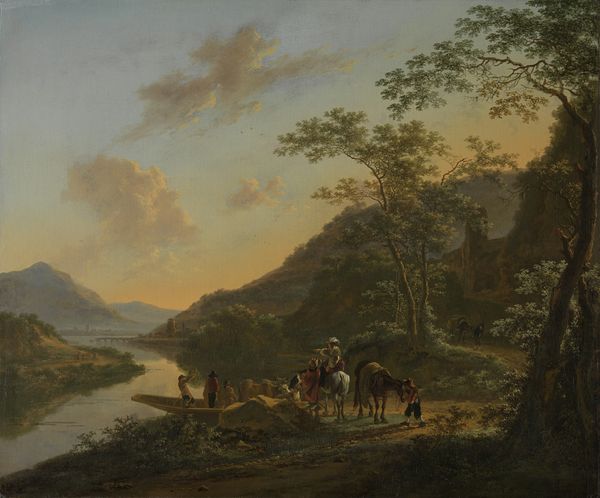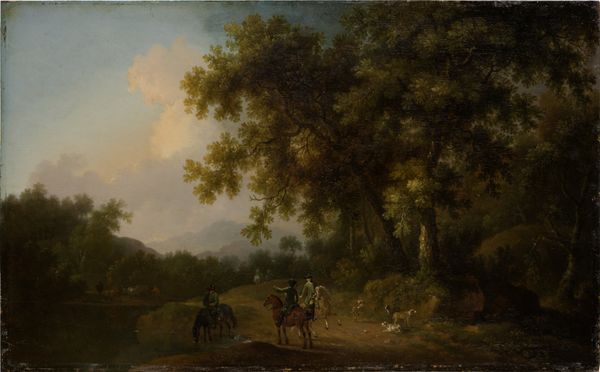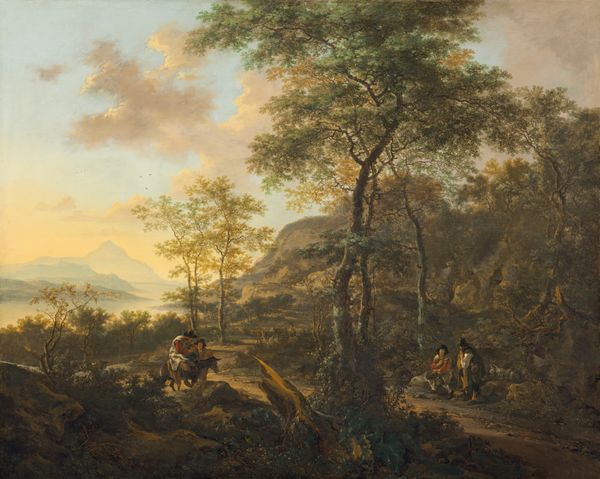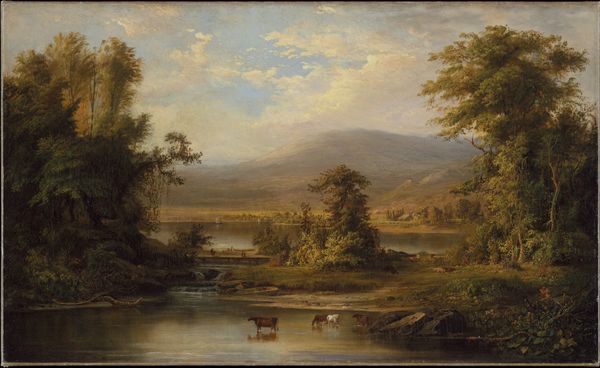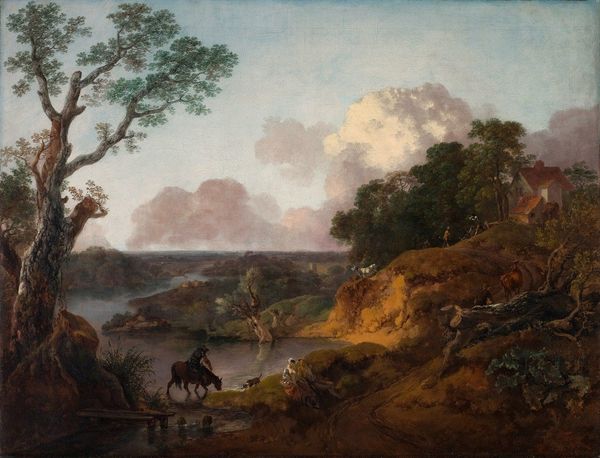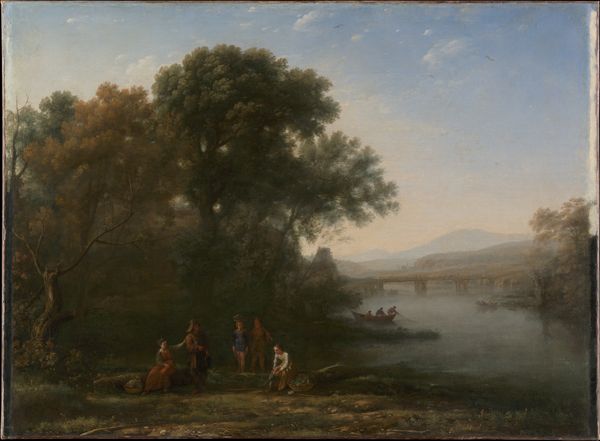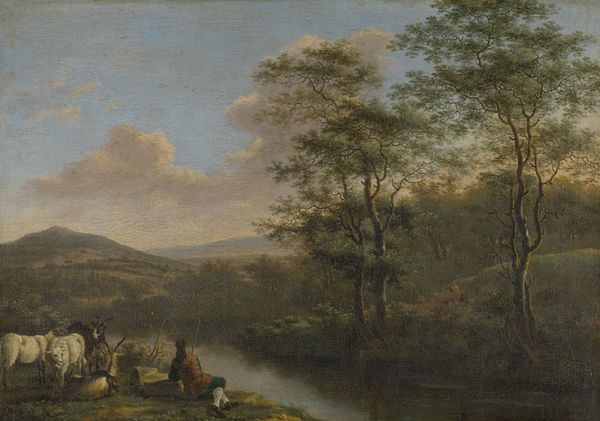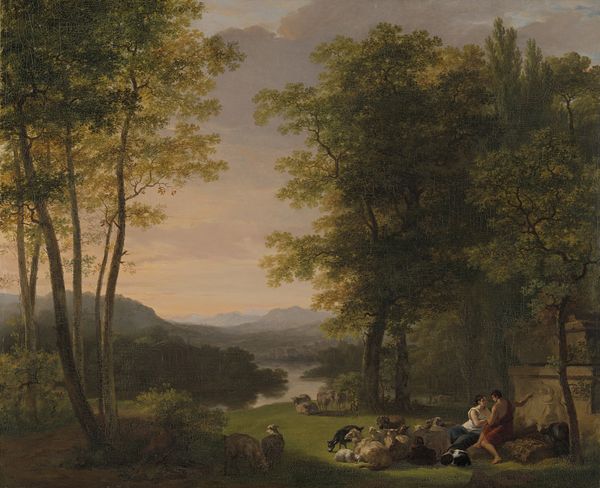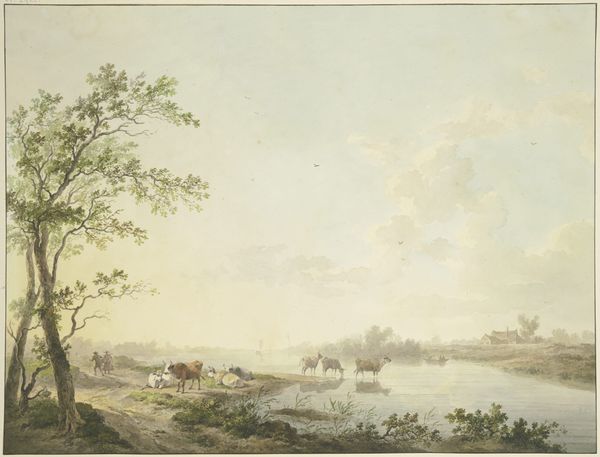
Dimensions: overall: 70.17 × 91.28 cm (27 5/8 × 35 15/16 in.) framed: 90.81 × 110.81 × 10.16 cm (35 3/4 × 43 5/8 × 4 in.)
Copyright: National Gallery of Art: CC0 1.0
Curator: Here we have Alvan Fisher's "Mishap at the Ford," painted around 1818. Editor: Oh, my. What a delightful scene! It looks like something between a comedy and a cautionary tale. The high society types stranded in their carriage mid-river…it's quite evocative. Curator: Indeed. Fisher’s technique showcases the Hudson River School style emerging at the time. Notice the detail of the oil paint and underpainting - his approach to materiality and blending that colored pencil quality results in this wonderfully balanced scene between disaster and serenity. Look at how the natural resources dictate human progress. Editor: I think there's more to it than just materials and resources. I see commentary here—a collision between social class and the power of nature. Those figures, likely wealthy landowners or merchants, are utterly at the mercy of the river, and even reliant on working-class laborers ferrying the wagon with them by river. This raises interesting questions about dependency. Curator: A keen observation. Though I think it is less a criticism and more so of simply presenting the mode of transportation. But speaking of social class, do note how carefully Fisher depicted each texture of the passengers' attires as they wade across! Editor: Sure, the fashion and the conveyance are carefully painted, which highlights that wealth—that performative identity—yet that makes it so obvious they still cannot dominate nature. It seems to be a message, even a pointed critique of that attitude during that period of expansion and settlement. Curator: I understand. But think about what the artist wanted to accomplish when producing these kinds of pieces. Perhaps by looking closer at what he might have gained and who he worked for, you could arrive at the intentions and messages behind the creation. Editor: Precisely! That intersection between artistic intention and the socio-political currents that shaped its production informs how we see the work today. It’s about recognizing whose stories are prioritized and which perspectives are amplified, now, too. Curator: And through the careful examination of material realities – what we’re presented with in color and brushstroke and production—we can reveal the structures supporting it. It has given us some really interesting insight for today. Editor: Agreed. Thinking about how class is presented and challenged through representations in landscapes gives the art so much extra texture.
Comments
No comments
Be the first to comment and join the conversation on the ultimate creative platform.
